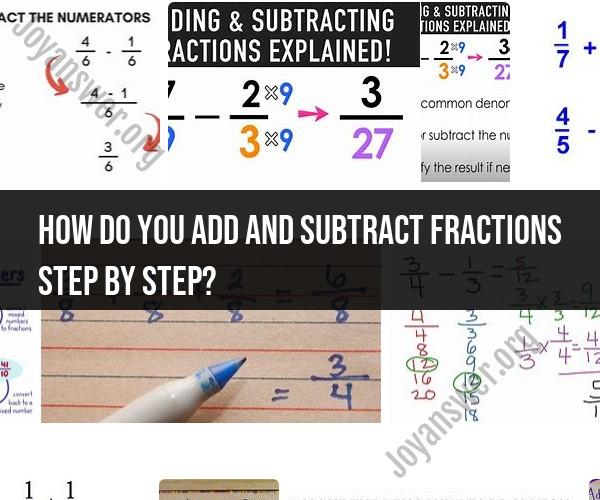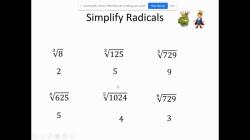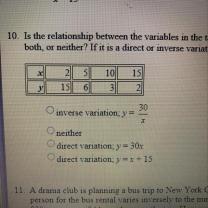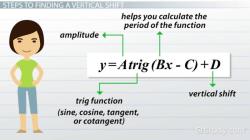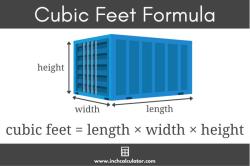How do you add and subtract fractions step by step?
Adding and subtracting fractions can be broken down into a step-by-step process. Here are the steps for both addition and subtraction:
Adding Fractions:
Step 1: Make sure the denominators (bottom numbers) are the same.
- If they are already the same, you can move to the next step.
- If not, find a common denominator. The common denominator is the least common multiple (LCM) of the two denominators.
Step 2: Convert the fractions to have the same denominator.
- For each fraction, multiply both the numerator (top number) and denominator by the same number to make the denominators the same.
Step 3: Add the numerators.
- Now that the denominators are the same, simply add the numerators together to get the numerator of the result.
Step 4: Keep the denominator the same.
- The denominator of the result is the common denominator you found or the original denominator if they were already the same.
Step 5: Simplify, if necessary.
- If possible, simplify the fraction by dividing both the numerator and denominator by their greatest common factor.
Subtracting Fractions:
Step 1: Make sure the denominators (bottom numbers) are the same.
- If they are already the same, you can move to the next step.
- If not, find a common denominator as in the addition process.
Step 2: Convert the fractions to have the same denominator.
- For each fraction, multiply both the numerator and denominator by the same number to make the denominators the same.
Step 3: Subtract the numerators.
- Now that the denominators are the same, subtract the second numerator from the first numerator to get the numerator of the result.
Step 4: Keep the denominator the same.
- The denominator of the result is the common denominator you found or the original denominator if they were already the same.
Step 5: Simplify, if necessary.
- As with addition, if possible, simplify the fraction by dividing both the numerator and denominator by their greatest common factor.
Here's an example of addition:1/3 + 2/5
Step 1: Find a common denominator, which is 15.Step 2: Convert both fractions to have 15 as the denominator: (1/3) becomes (5/15), and (2/5) becomes (6/15).Step 3: Add the numerators: 5/15 + 6/15 = 11/15.Step 4: The result is 11/15.
And an example of subtraction:3/4 - 1/8
Step 1: Find a common denominator, which is 8.Step 2: Convert both fractions to have 8 as the denominator: (3/4) becomes (6/8), and (1/8) remains (1/8).Step 3: Subtract the numerators: 6/8 - 1/8 = 5/8.Step 4: The result is 5/8.
Remember that fractions should be in the same denominator before adding or subtracting them, just like you wouldn't add apples and oranges.
Fractions 101: Adding and Subtracting Step by Step
Fractions are a way of representing parts of a whole. They can be written in different ways, such as 1/2, 1/4, and 2/3.
To add and subtract fractions, they must have the same denominator. The denominator is the number on the bottom of the fraction.
To add fractions with the same denominator:
- Add the numerators.
- Keep the denominator the same.
To subtract fractions with the same denominator:
- Subtract the numerators.
- Keep the denominator the same.
Example:
Add 1/2 and 1/4:
1/2 + 1/4 = 2/4 + 1/4 = 3/4
Subtract 1/2 from 1/4:
1/4 - 1/2 = 1/4 - 2/4 = -1/4
Mastering Fraction Arithmetic: A Step-by-Step Guide to Subtraction
To subtract fractions with different denominators, you need to find a common denominator. The common denominator is the smallest number that both denominators divide into evenly.
To find the common denominator:
- List the multiples of each denominator.
- Find the smallest number that is in both lists.
Once you have found the common denominator:
- Multiply the numerator and denominator of the first fraction by the number needed to make the denominator equal to the common denominator.
- Multiply the numerator and denominator of the second fraction by the number needed to make the denominator equal to the common denominator.
- Subtract the numerators.
- Keep the denominator the same.
Example:
Subtract 2/3 from 1/4:
- Find the common denominator:
3 * 4 = 12
4 * 3 = 12
The common denominator is 12.
- Multiply the numerator and denominator of the first fraction by 4:
2/3 * 4/4 = 8/12
- Multiply the numerator and denominator of the second fraction by 3:
1/4 * 3/3 = 3/12
- Subtract the numerators:
8/12 - 3/12 = 5/12
Subtraction of Fractions: Understanding the Process and Practice
Subtracting fractions is the process of finding the difference between two fractions. It can be done using a variety of methods, including the following:
- Using a visual model: Fractions can be represented visually using a variety of models, such as fraction circles, fraction bars, and fraction strips. Using a visual model can help students to understand the concept of subtraction of fractions.
- Using a number line: Fractions can also be represented on a number line. To subtract fractions using a number line, start at the first fraction and move to the left by the amount of the second fraction. The difference between the two fractions is the number you land on.
- Using a fraction manipulatives: Fraction manipulatives are concrete objects that can be used to represent fractions. Fraction manipulatives can be used to subtract fractions by removing the fraction amount of the second fraction from the first fraction.
Practice:
The best way to master subtraction of fractions is to practice. There are many different resources available online and in libraries that can provide practice problems.
Here are a few tips for practicing subtraction of fractions:
- Start with simple problems and gradually work your way up to more complex problems.
- Use a variety of methods to subtract fractions. This will help you to develop a deep understanding of the concept.
- Check your work carefully. Make sure that you are subtracting the correct fractions and that your answer is correct.
If you are struggling with subtraction of fractions, ask for help from a teacher, parent, or tutor.
